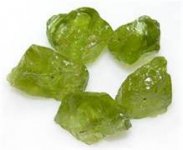hvacker
Bronze Member
I liked this story so here it is. One favorite book of mine is Minerals of New Mexico ( printed 1959) Along with all the factual information there is an occasional story. It was discovered that in western NM the ant hills contained garnets.
At first due to the deep color they were thought to be ruby. The ant hills are huge, even six feet across and scattered on top would be these garnets. People puzzled as to why. Some even thought the stones were placed so the sun would warm them and brought to the ants eggs. Others thought maybe they were just brought up along with the other stones. Problem is digging in the ground doesn't produce them.
I've looked in the hills (btw the ants bite) but I'm a bit east from where they are usually found. The stones are sold in gem stores here and are more ruby like.
So in your quest don't forget the odd places stuff can be.
At first due to the deep color they were thought to be ruby. The ant hills are huge, even six feet across and scattered on top would be these garnets. People puzzled as to why. Some even thought the stones were placed so the sun would warm them and brought to the ants eggs. Others thought maybe they were just brought up along with the other stones. Problem is digging in the ground doesn't produce them.
I've looked in the hills (btw the ants bite) but I'm a bit east from where they are usually found. The stones are sold in gem stores here and are more ruby like.
So in your quest don't forget the odd places stuff can be.




